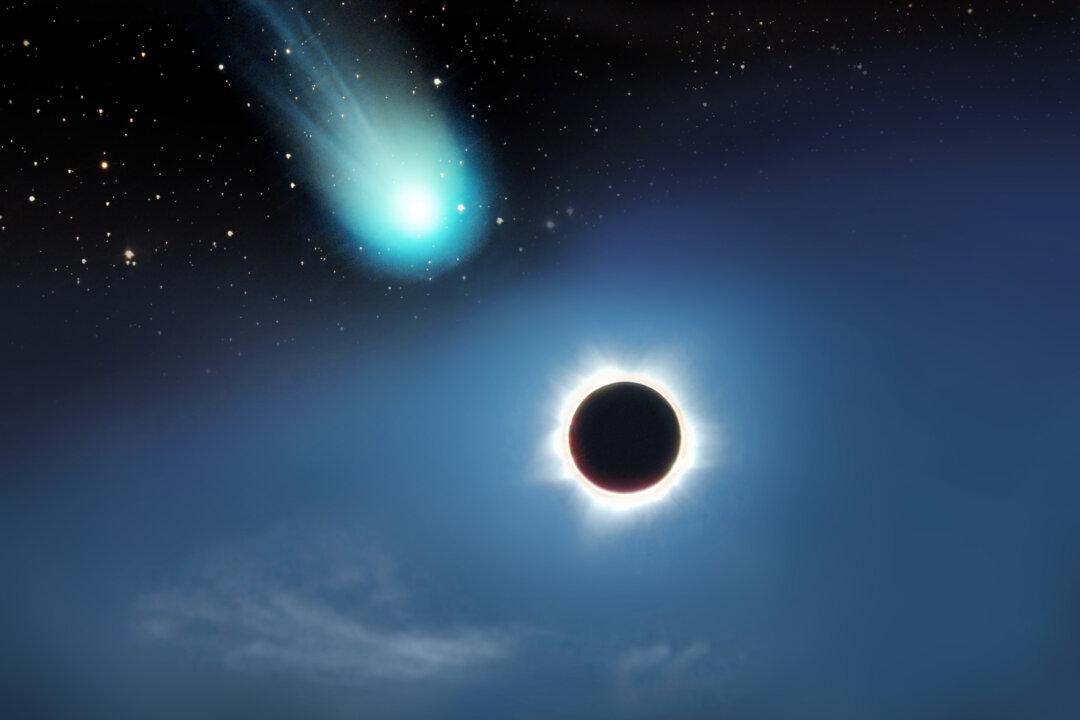A comet returning after seven decades and putting on a spectacular show in our solar system is expected to soon appear at the highly-anticipated April total solar eclipse over North America.
It took 71 years—but Comet P12/Pons-Brooks has finally returned to our inner solar system after traversing its gargantuan elliptical orbit around the sun. The last time it reached perihelion (its point closest to the sun) was in May 1954, the same year Elvis Presley recorded his second demo at Sun Studios in Memphis.






